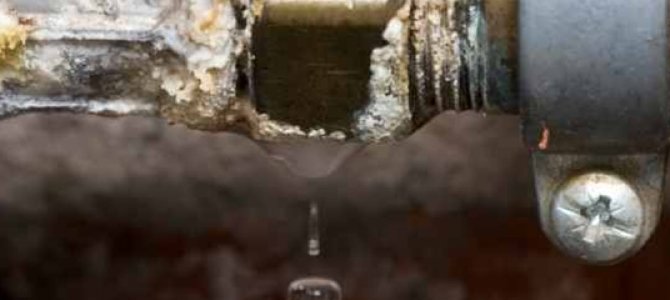 Shopping Cart
Shopping Cart
04 February 2022
How to find a leak in your water tank

A rainwater tank is a great investment right now for a lot of homes throughout New Zealand. With increasing drought conditions likely to lead to more and more water restrictions in the future, being able to access your own water supply via a rainwater tank is a great way to increase the sustainability of your home and ensure you can keep on doing the things you love during periods of water restriction.
Whether that’s watering the garden, washing the car or even ensuring you have access to clean, green water all year round in your home, a water tank is a great option.
There are already thousands of homes in New Zealand that have water tanks installed – either for use outdoors or connected to the main water supply to the house to provide potable water for washing, drinking, showering and more.
One thing that is making tanks more appealing and accessible is the range of shapes and sizes that tanks come in today. From huge 30,000 litre tanks to small 200 litre barrels, rainwater tanks can be fitted in and around most properties today depending on how you plan to use the water you collect.
They also come in a variety of materials which make them pretty versatile. From large concrete tanks that are typically fitted underground to poly tanks that can be moulded and shaped in a variety of ways and in different colours to match your home, there is no shortage of options when it comes to rainwater tanks in New Zealand.
Whilst they are built to last – some rainwater tanks will come with a 25-year guarantee, over their lifetime, it is possible, almost probable, that they will develop a leak at some stage. The good news for you is that in most cases, leaks are relatively easy and cost-effective to fix and will help to prolong the life of your rainwater tank.
Here are some of the common causes of leaking water tanks and how to fix them:
Cracks
Water tanks are meant to be durable and reliable enough for storing water, however, they will deteriorate over time as they get older. Cracks in concrete water tanks are fairly common as the concrete expands and contracts over time as it warms up and then cools down in the winter months.
Over its lifetime, the concrete will expand and contract a lot, and this can, in some cases, lead to cracks appearing. The key to preventing leaks, or certainly major leaks, is constant vigilance. Monitor the condition of the tank, inside and out, and make a note of any small cracks or changes to the appearance of the tank. Sometimes, a small repair might be possible without having to drain the entire tank if you spot it early enough, however, in a lot of cases, it will be necessary to empty the tank completely, allow it to dry out and then make the necessary repair.
With plastic tanks (often referred to as poly tanks), cracks can be caused by expansion and contraction across the different seasons and like a concrete tank, you should closely monitor the overall condition of your tank to help prevent any serious leaks from forming.
Cracks can also be caused in plastic tanks if they are hit by sharp objects or repeatedly hit with a ball for example. The weight of the water in the tank means there is a lot of pressure inside the tank and this can lead to cracks if a specific area of the tank becomes weakened for any reason. If you use the tank as a cricket wicket for example, if a ball hits the tank constantly, this can lead to a weakening of the tank over time which could lead to cracks or splits developing.
Poly tanks are usually more straightforward to repair than concrete tanks, although they will usually require draining in order to carry out a full and proper repair that will last. The usual repair for a crack in a poly rainwater tank is to reweld the join or to weld a plastic patch over the crack using heat and a polyethylene filler material.
Rusting
Whilst less common here in New Zealand, mainly due to the prohibitive costs, there are still some properties that install stainless steel water tanks. These are typically used for smaller installations and like any stainless steel product, they are susceptible to rust over time which can turn into a leak.
Stainless steel is a low corrosion metal, however, here in New Zealand where many people live close to the coast, the salt air can speed up the rusting process so it pays to keep a close eye on the condition of your water tank to ensure small patches of rust do not develop and cause issues with rusting.
In positive news, stainless steel tanks are probably the easiest to repair and can be done by welding or patching the leak with a waterproof sealant. Stainless steel doesn’t degrade and is less susceptible to changes in temperature so it can provide a good alternative to concrete and plastic tanks.
Connections
One of the most common areas to find a leak with a water tank is around the connection points (both into and out of the tank). Your rainwater tank collects water from the gutters and this then flows into the tank via a connection pipe. You want to maximise the amount of water you collect so make sure you regularly check the connection to make sure there are no leaks as the water flows into the tanks. Whilst this is not a leak as such, it could prevent you from collecting water and it could also mean that contaminants could find their way into your water supply if the connection is not a tight seal.
A more common place to find a leak is from the pipe that connects your tank to your home or if you simply use your rainwater tank for watering the garden and outdoor use, then a leak can form at the outlet where you attach the hose or you have a tap fitted. These leaks are typically easier to spot as there will be an obvious puddle of water if the hose or tap leaks and these are usually easy to fix and don’t require any specialist help.
Monitoring your water tank levels
One way of monitoring for leaks in a rainwater tank is to install a water metre. That way, you can monitor your average water consumption and make a note if your water usage is unusually high. This could be an early indication of a leak in your tank.
At Smart Water, we have engineered the most advanced tank level indicator available that now offers full cloud connectivity.
Easy to install yourself, your Smart Water tank indicator provides you with all the information you need from our app or from one of our LCD displays. Find out how much water you consume on average from your tank, accurate pressure data and estimates on when your tank will run out of water based on current usage.
Find out more about our range of products or check out our FAQs for more information.
Frequently Asked Questions
What are the most common causes of leaks in rainwater tanks?
Leaks in rainwater tanks are often caused by cracks from material expansion and contraction, impact damage, rust in stainless steel tanks, or faulty connections at inlet and outlet points. Regular inspections help identify potential leak sources early.
How can cracks in plastic and concrete water tanks be repaired?
Plastic (poly) tanks typically require draining and can be repaired by rewelding or applying a heat-welded polyethylene patch. Concrete tanks may need to be emptied, dried, and patched using suitable sealants or repair materials to restore structural integrity.
Why are connection points common areas for water tank leaks?
Connection points, including inlet pipes from gutters and outlets to hoses or home plumbing, are susceptible to leaks because seals can loosen over time. Regular checks and maintenance ensure tight connections, preventing water loss and contamination.
